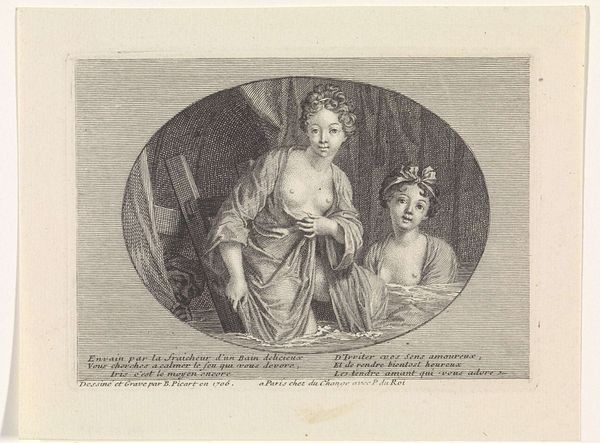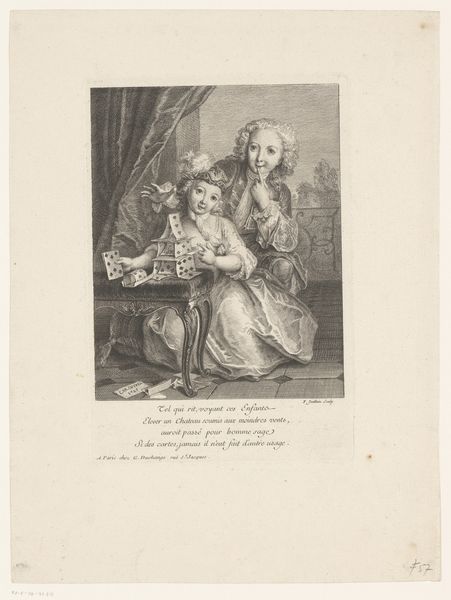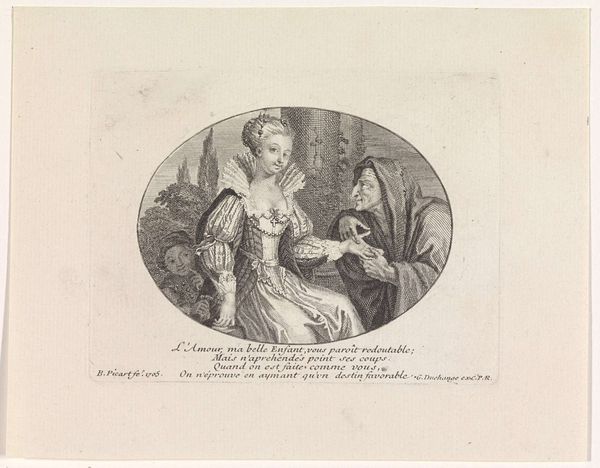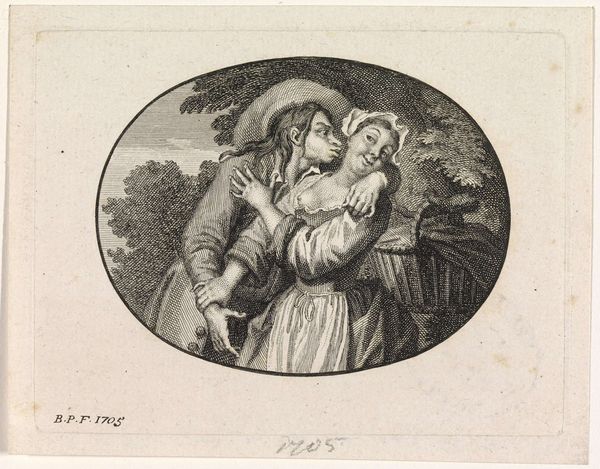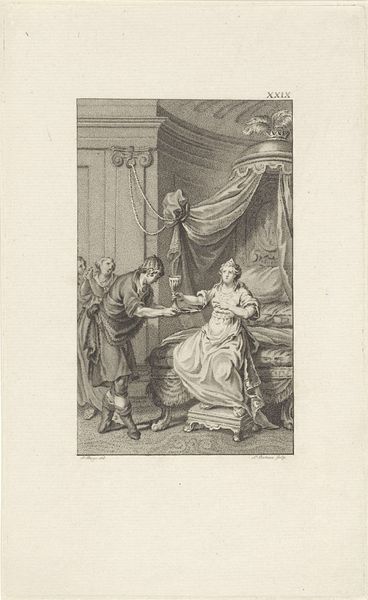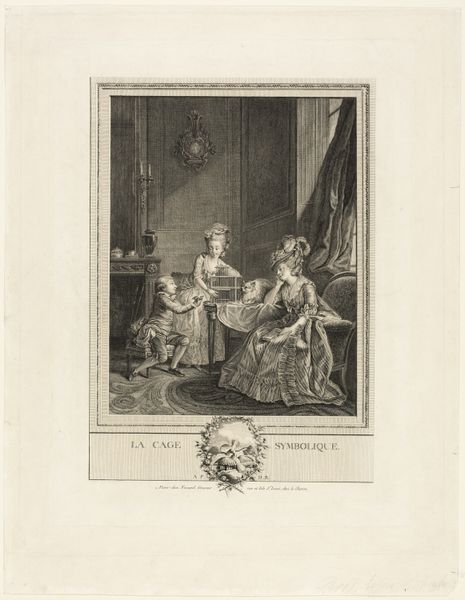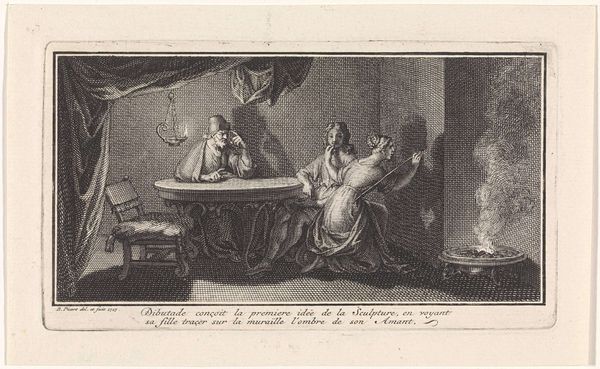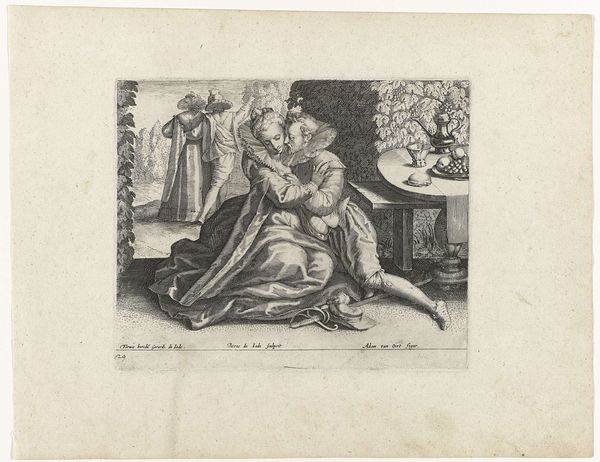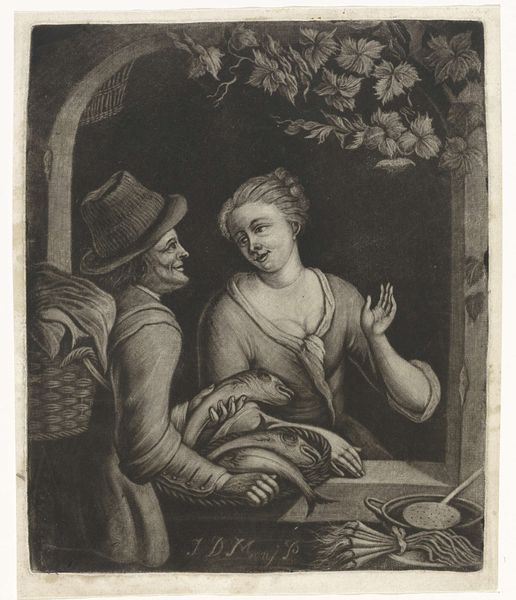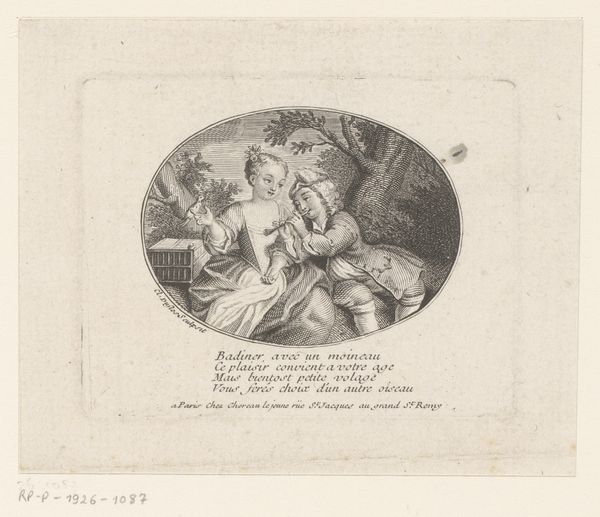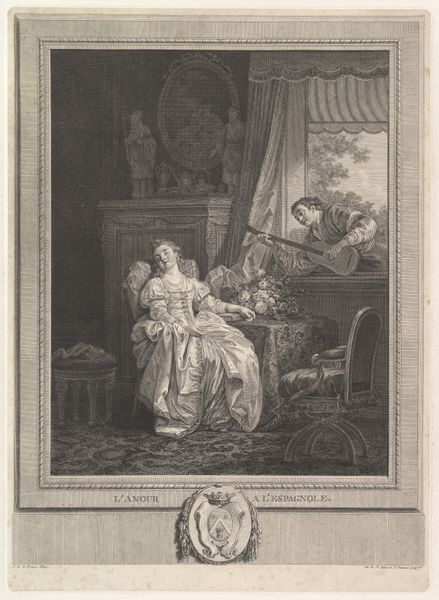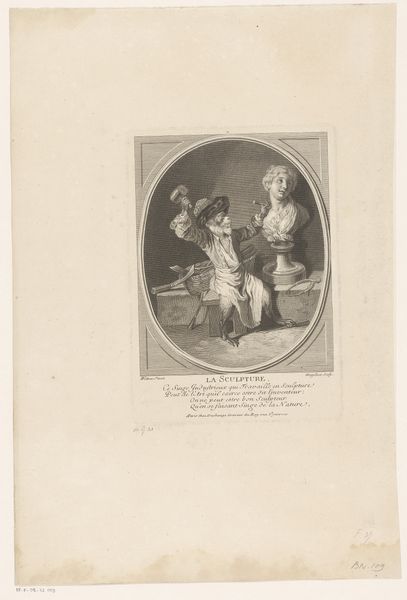
print, engraving
#
portrait
#
baroque
# print
#
old engraving style
#
figuration
#
engraving
#
erotic-art
Dimensions: height 80 mm, width 105 mm
Copyright: Rijks Museum: Open Domain
This print, made by Bernard Picart around 1705, is an etching. This means the image was incised into a metal plate, likely copper, with a sharp tool, then inked and pressed onto paper. The fine, precise lines give a remarkable level of detail. Notice how the very act of printing, a technology developed in Europe during the Renaissance, lends itself to the image’s subject matter. The couple depicted is clearly well-to-do, enjoying the new commodities made available by global trade: tobacco, sugar, perhaps even the metal of the print itself. The etching process, allowing for the mass production of images, mirrors the mass production and consumption that defined this era. But the image also speaks to labor. The incredible skill required to create such a detailed print highlights the importance of artisanal knowledge. While mass production was on the rise, skilled craftspeople like Picart still held considerable social and economic power. Ultimately, this print reminds us that even seemingly simple images are deeply intertwined with materials, making, and the social contexts that shape them. It blurs the lines between fine art, craft, and the realities of labor and commerce in the 18th century.
Comments
No comments
Be the first to comment and join the conversation on the ultimate creative platform.
